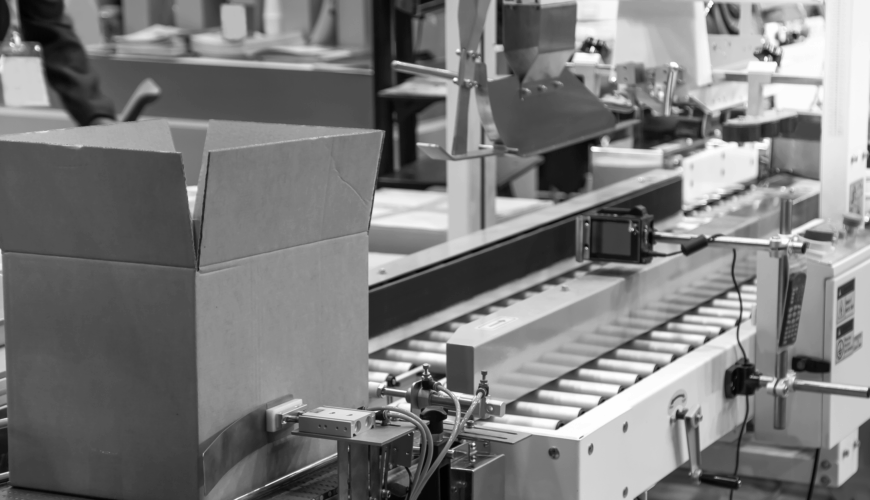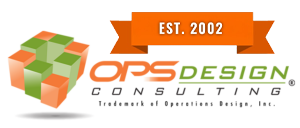When it comes to warehouse and distribution center automation, most attention goes to the big-ticket investments: high-density storage systems, autonomous mobile robots, or goods-to-person technology. Yet one of the most critical, and often overlooked, opportunities lies in the last 100 feet of the DC, the stretch where goods are packed, labeled, and readied for shipping. Falling under the umbrella of scanning, labeling, application, and manifesting (often referred to as SLAM), adding automation to this area can have a real impact and help avoid a common area for bottlenecking.
This final stretch may seem less glamorous than robotics in storage or retrieval, but it’s where orders meet customers. And with today’s pressures, rising order volumes, labor shortages, and higher shipping costs, this area has become a prime candidate for automation investments that are low in cost, quick to implement, and high in return.
Why the Last 100 Feet Is Under Pressure
The final 100 feet has always been important, but in today’s environment, it has become mission critical.
Several trends are converging:
E-commerce growth and omnichannel retailing: Order volumes are higher, orders are smaller, and delivery windows are shorter. The throughput demands on the shipping area have never been greater.
Labor constraints: Even with competitive pay, many DCs struggle to attract and retain workers for repetitive packing and labeling tasks. This is where automation can relieve pressure.
Carrier compliance: Major parcel carriers are tightening requirements around dimensioning, labeling, and manifesting. Mistakes lead to costly chargebacks, surcharges, and delayed deliveries.
Rising customer expectations: Late or mis-labeled packages erode customer trust, and the last 100 feet is often where these errors occur.
When these factors combine, even the most sophisticated upstream automation can grind to a halt if the end-of-line isn’t designed to keep pace.
Key Automation Tools in the Last 100 Feet
Unlike large-scale facility redesigns, automation at the end of the line can be introduced incrementally. Here are some of the most impactful technologies:
Conveyors and Sortation Systems
Conveyors eliminate wasted motion, keeping items moving consistently toward packing and shipping stations. Sortation systems then direct parcels to the correct carrier lane, minimizing manual intervention and reducing misroutes.
Automated Scanning, Weighing, and Dimensioning
Automated stations can instantly capture barcode data, dimensions, and weight with near-perfect accuracy. This information flows directly into your WMS or WCS, ensuring compliance and supporting accurate freight billing.
Print-and-Apply Labeling Systems
Manual labeling is slow and error-prone. Automated print-and-apply systems reduce cycle times, ensure correct placement, and allow operations to keep up with higher volumes without additional staff.
Dunnage and Packing Automation
Systems that automatically cut, fill, and insert protective material not only speed up packing but also reduce material waste and ensure consistent package protection, lowering damage rates.
Integration with Warehouse Software
The biggest efficiency gains come when these devices are connected to the WMS or WCS. This real-time integration ensures that every scan, label, and dimension is captured, tracked, and optimized.
The ROI of Automating the Last 100 Feet
One of the most significant advantages of last-100-feet automation is its fast payback period. Unlike projects requiring multi-million-dollar infrastructure changes, SLAM-focused initiatives often pay for themselves within a year or two.
Key ROI drivers include:
Throughput gains: With automated scanning, labeling, and sortation, DCs can often double or triple shipping capacity.
Error reduction: Each mislabeled or mis-shipped order costs time, money, and customer trust. Automation minimizes these risks.
Labor efficiency: Workers can be redeployed from repetitive manual tasks to higher-value roles, mitigating the impact of labor shortages.
Compliance savings: Avoid carrier penalties for mislabeled or mis-measured parcels.
Sustainability benefits: Smarter dimensioning and packing can reduce material waste and improve cube utilization, cutting transportation costs and emissions.
Real-World Applications
Forward-looking companies are already seeing measurable impact by investing in this area. For example:
A major e-commerce retailer introduced automated print-and-apply systems and reduced their labeling labor by 70%, while increasing throughput by 40%.
A consumer goods manufacturer added automated dimensioning and weighing stations, eliminating nearly all carrier compliance chargebacks and saving millions annually.
A third-party logistics (3PL) provider integrated conveyors, sortation, and WMS connectivity in their SLAM zone, enabling them to scale seasonal shipping volume by 3X without adding significant headcount.
These examples highlight how automation in the last 100 feet can scale across industries and facility sizes.
How to Get Started: Building a Roadmap for Automation
Automating the last 100 feet does not have to be an all-or-nothing investment. The most successful operations approach it as a stepwise journey guided by data and operational priorities. Key steps include:
Assess Current Bottlenecks
Begin with an industrial engineering study to pinpoint where delays and errors most often occur, whether it’s manual label application, inaccurate weighing, or slow sortation.
Benchmark and Set Goals
Compare current throughput, error rates, and labor usage with industry standards. Define clear KPIs, such as “reduce labeling labor by 50%” or “increase outbound throughput by 30%.”
Prioritize Quick Wins
Start with modular solutions that offer fast ROI, such as automated print-and-apply systems or dimensioning equipment, before scaling into larger, integrated systems.
Integrate with Systems
Ensure automation is not siloed. Connect new equipment to your WMS/WCS for real-time data flow and more intelligent decision-making.
Plan for Scalability
Design the SLAM zone with flexibility in mind so that additional conveyors, packing stations, or sortation equipment can be added as order volumes grow.
Engage Stakeholders
Involve operations teams, IT, finance, and carrier partners early. A cross-functional approach ensures that technology aligns with business strategy.
By following this roadmap, DC operators can avoid costly missteps and create a scalable foundation for ongoing automation.
Looking Ahead: Future-Proofing the DC
The final 100 feet may represent a short stretch in the warehouse, but its impact is outsized. As robotics, AI, and data-driven optimization advance, the SLAM zone is likely to become even smarter:
- AI-driven exception handling will help flag problem parcels in real-time.
- Dynamic labeling and routing will allow for on-the-fly adjustments based on carrier capacity or cost.
- Collaborative robotics may assist workers at pack stations, reducing ergonomic strain and increasing consistency.
- IoT connectivity will provide deeper visibility into every package leaving the facility.
In this sense, the last 100 feet is not just about efficiency; it’s about building resilience into the supply chain.
Conclusion
Automating the last 100 feet of your DC may not grab headlines like warehouse robotics or automated storage systems, but it delivers real, measurable value where it counts most: at the customer-facing end of fulfillment. By focusing on SLAM processes and end-of-line automation, DC operators can unlock throughput gains, reduce costs, and stay competitive in a market where speed and accuracy are non-negotiable.
In today’s environment of labor shortages, rising costs, and heightened customer expectations, the last 100 feet may be the shortest distance in your facility, but it delivers the longest-lasting impact on your business.


